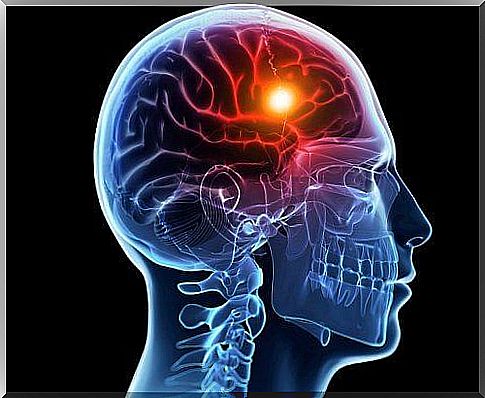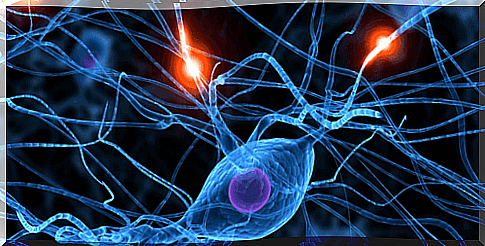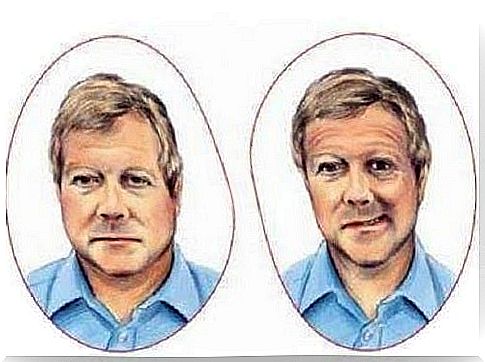Types Of Strokes, Causes And Symptoms

A stroke is a form of cerebrovascular pathology or disease of the brain. Strokes represent up to 50% of all neurological disorders. In addition, strokes are the third leading cause of death in the world, after heart disease and cancer. In this article, we’ll discuss the types of strokes and their causes and symptoms.
A pathological process in the blood vessels causes these neurological changes. They cause abnormalities in the brain. After all, the brain is dependent on a steady blood flow.
The brain damage thus occurs when the blood flow in certain parts of the brain stops even for a few minutes. If this problem persists, then neuronal necrosis (local tissue death) also continues and causes irreversible injury.
How can one determine the damage caused by a stroke?
Doctors and neurologists can use radiological tests to diagnose brain damage. For example, a CT scan or an MRI scan can provide a lot of information about which brain structures are affected.
In addition, it is also important that a psychologist performs a neurological examination. That way you can find evidence that the radiological tests can’t identify. This could be changes in behaviour, for example. Both techniques are necessary for a more complete and accurate diagnosis.

The characteristics of a stroke or cerebrovascular accident
As we said, stroke is a form of cerebrovascular pathology. It is part of a group of disorders with various causes. The common feature in these disorders is that a vascular mechanism causes a brain injury.
Over the past decade, strokes of all kinds have become more common. This is also due to the increasing use of techniques in neuroimaging (imaging the functioning of the nervous system). These techniques have allowed us to diagnose strokes more accurately. Lifestyle choices have also increased the incidence of strokes.
The main risk factors for the different types of stroke are linked to a number of processes. These processes facilitate the accumulation of fats in the blood vessels and cause calcification or loss of flexibility of the blood vessels. Examples of these processes are high blood pressure, cholesterol, diabetes or smoking.
Having a stroke is often more common in people over the age of 60. A CVA (cerebrovascular accident) causes the interruption of blood flow in one part of the brain. When this oxygen deficiency persists for a period of time, it causes damage to brain tissue or death.
What are the symptoms of a cerebrovascular accident or stroke?
The symptoms of a stroke are usually painless and short-lived. They often pass without being diagnosed. The appearance of these symptoms is usually seen on the side of the body opposite to the affected hemisphere.
For example, if there is a drop in blood flow in the right side of the brain, the effects will often manifest on the left side of the body.
In addition, the person usually experiences a loss of strength or numbness in one half of the body (the face, arms, legs, and so on). Sudden loss of vision may also occur. Dan may be partial or complete in one or both eyes. Also common are difficulties in speaking or understanding.

Types of Strokes
A stroke therefore causes a disturbance in the normal blood flow in the brain. This is also why we call it a cerebral or cerebral infarction. A blockage (ischemic stroke) or bleeding (hemorrhagic stroke) can cause a stroke. Now let’s take a closer look at both types of stroke.
Ischemic stroke (closure of a blood vessel)
The cause of an ischemic stroke is the interruption of the blood supply due to a blockage of the blood vessel. A blood clot then moves through the blood vessel in the direction of the brain. At some point, it lodges in an artery and forms a blockage.
When there is less blood in the brain, there is also less supply of oxygen. This causes damage in the area of the brain that does not receive enough blood.
The cause of this type of stroke is the lack of systemic irrigation, a thrombosis or an embolism.
- Thrombosis: This occurs when a blood clot placed on top of an atheroma (a layer of solidified fat) narrows a blood vessel in the brain. Thrombosis can occur suddenly.
- Embolism: In this case, a blood clot that has formed in the heart or as part of a thrombus is released into the circulation and blocks a distant artery.
Hemorrhagic Stroke
The death rate from hemorrhagic strokes is higher than that from ischemic strokes. Nearly 30 to 50% of people die within the first few months of having a hemorrhagic stroke.
This is one of the more serious types of stroke. That’s because the blood can also cause brain damage. In this case, the bleeding itself is a damaging factor. An artery then becomes weak and ruptures. This causes the stroke. Aneurysms and high blood pressure are two mechanisms that can rupture a blood vessel.
- Aneurysm: This is the dilation in which a blood vessel widens and a localized swelling occurs. It is the result of a congenital weakness in the artery wall. As a result, the blood begins to fill the subarachnoid space. The skull cannot change its volume to accommodate this new blood. The pressure in the skull therefore rises. This causes serious side effects.
- Hypertension: High blood pressure increases the risk of brain haemorrhage. In this case, the blood is released into the brain and begins to damage various parts of the brain. The chance of dying from high blood pressure is 80%. There is also a high risk that a person will eventually enter a vegetative state.

Currently, the risk of cerebrovascular accidents or strokes is 3.5% in the population group of people older than 64 years. From the age of 65 to 74, the risk of having a stroke is higher in men. However, after age 75, the risk rises significantly in women.









